Katzhagen - Archive - April 2009
Light at the train's tail
is a greatly appreciated effect, especially at night. The method for implementing a tail light which is missing ex factory shown here with a LGB car for liquid steel can be applied to almost any vehicle of this scale.
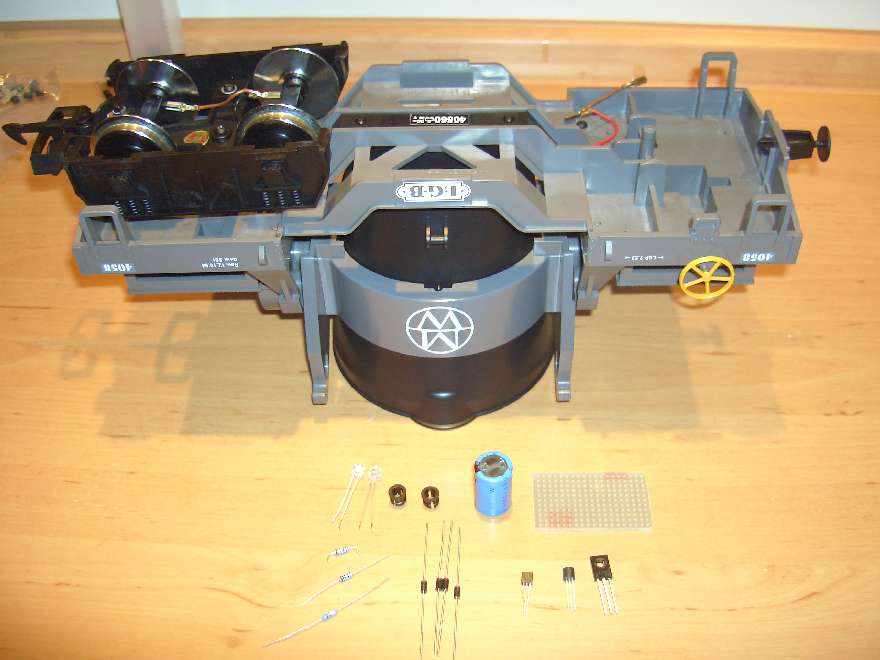
Partially dismounted car and parts for the tail light
The car's ball bearing wheel are used to pick up the voltage. One of the chassis' cavities is used as a housing for the electronic parts which supply power to the clear LEDs.

The proven power supply based upon current control
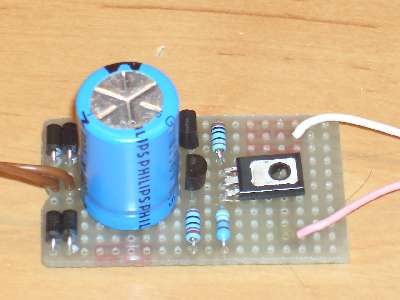
Board ready for mounting
Two holes need to be drilled into the chassis to accomodate the rings into which the LEDs are clicked in.

LED rings disguised as light rings - drilled, clicked in, done.
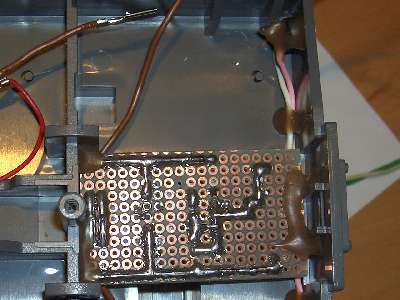
The board frenched in a cavity...
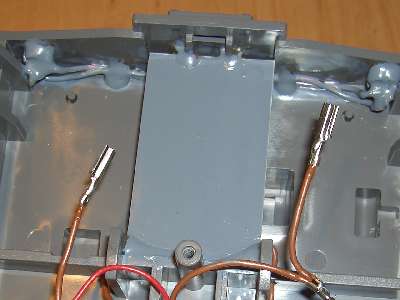
... is protected by a piece of varnished ABS.
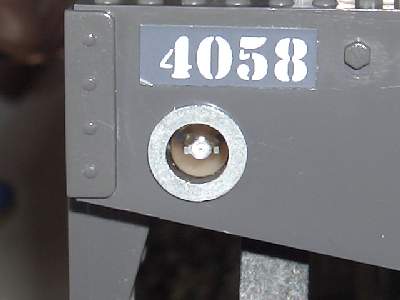
Tail light consisting of a mounting ring and a LED
The board's size was adapted to one of the chassis' cavities. This way
the more or less big electrolytic capacitor has no chance to interfere
with the truck's movements.
A piece of varnished ABS is a simple protection for the board which is mounted above one of the trucks. The tail light and the motor which moves the car's tank share the power supply via the ball bearing wheels.
The mounting rings for the clear but red glowing LEDs were varnished in silver from a spray can. This makes them look like light rings being made from aluminum.
This minor modification influences the car's appearance significantly.
A piece of varnished ABS is a simple protection for the board which is mounted above one of the trucks. The tail light and the motor which moves the car's tank share the power supply via the ball bearing wheels.
The mounting rings for the clear but red glowing LEDs were varnished in silver from a spray can. This makes them look like light rings being made from aluminum.
This minor modification influences the car's appearance significantly.


